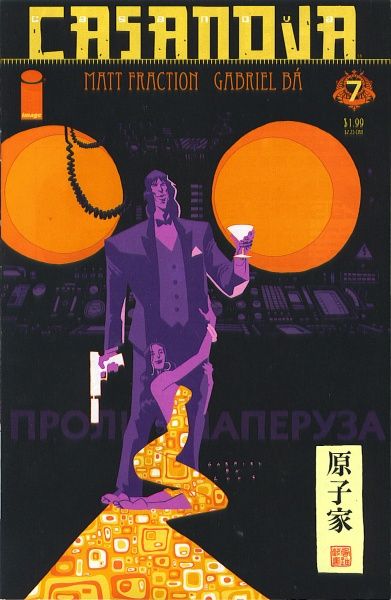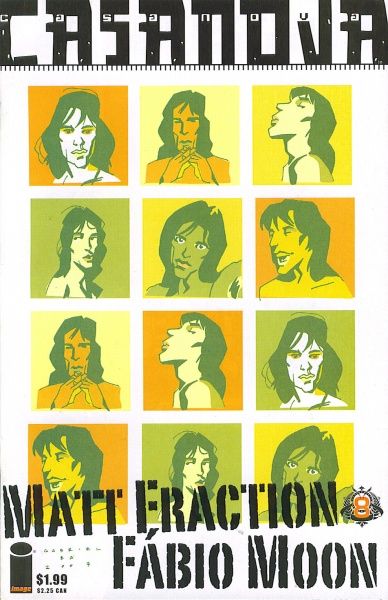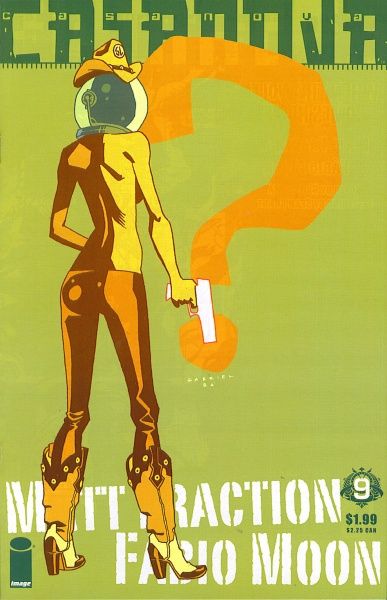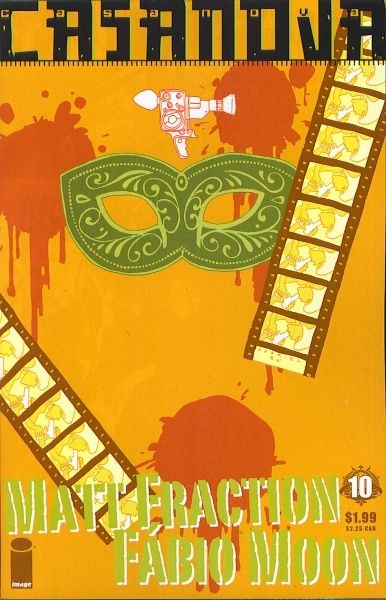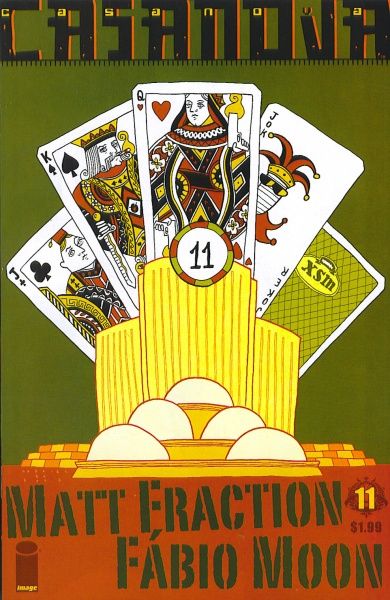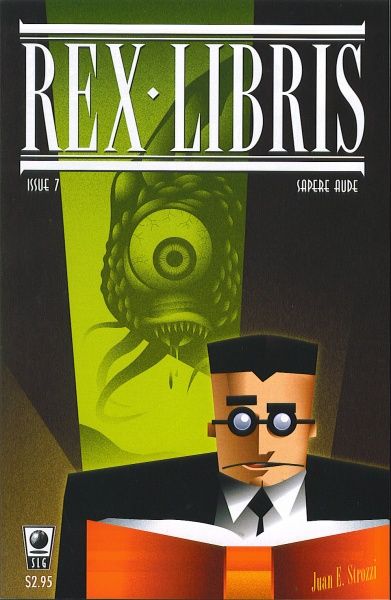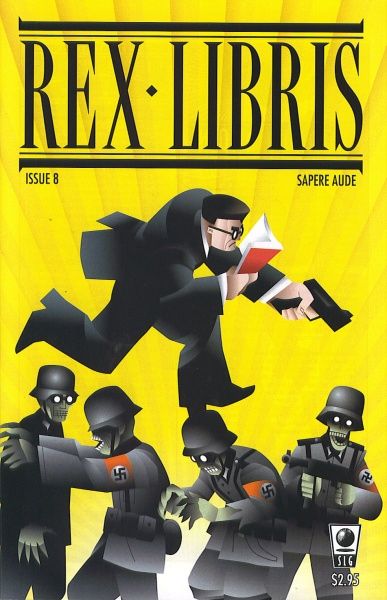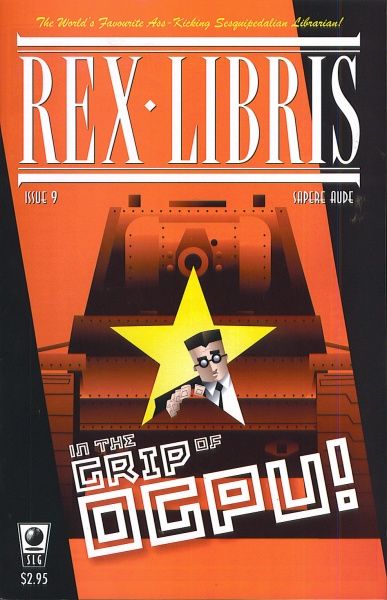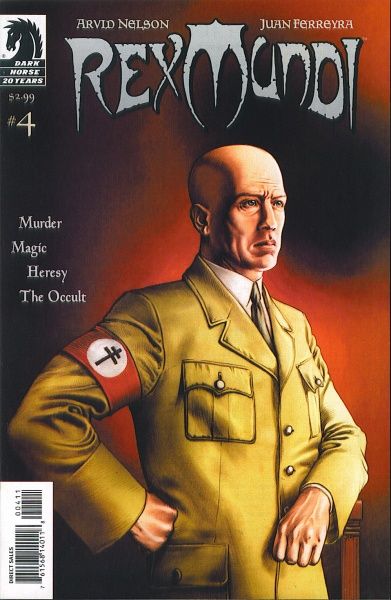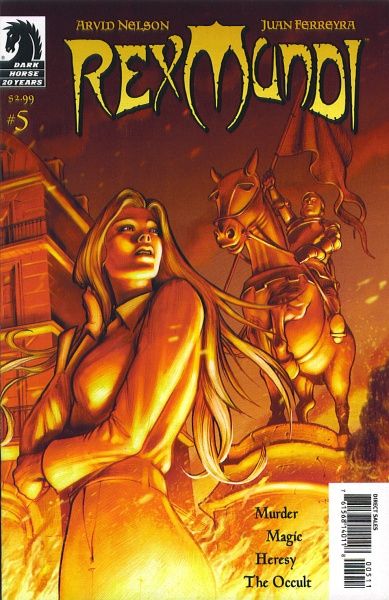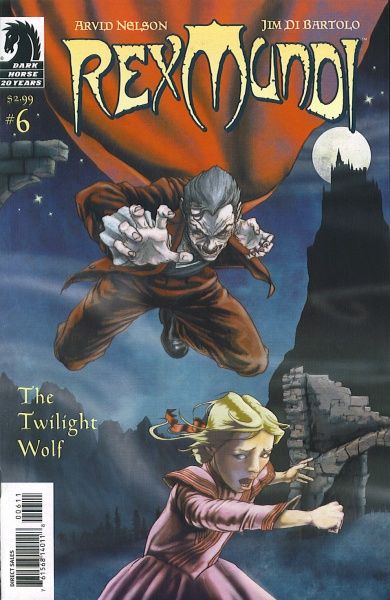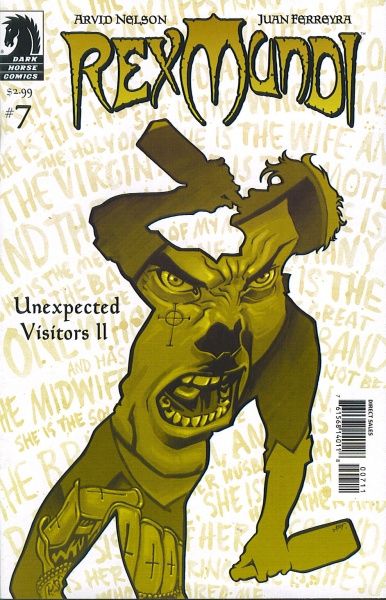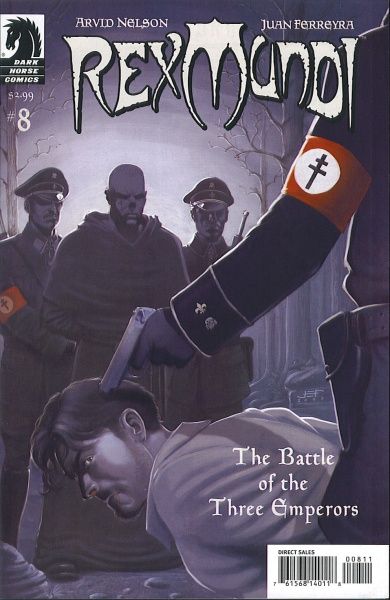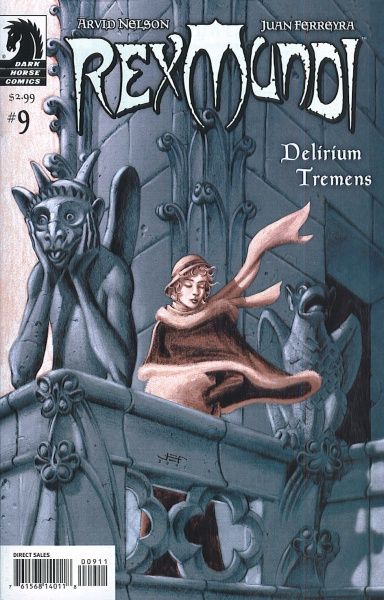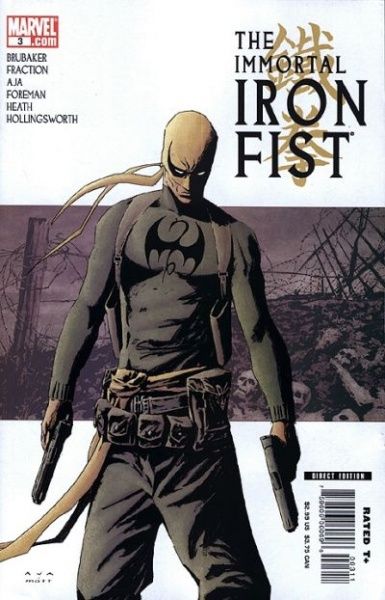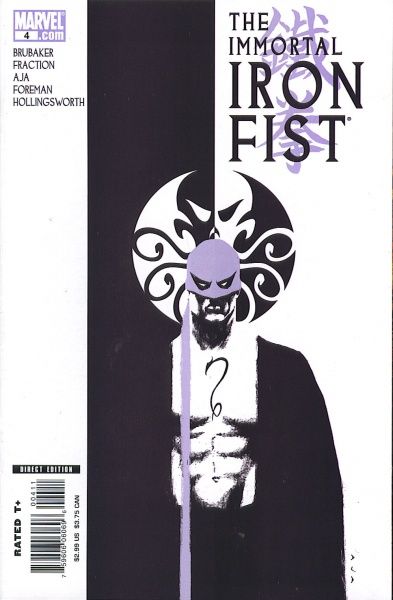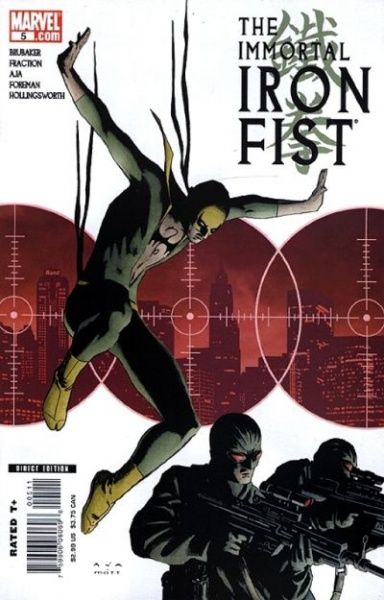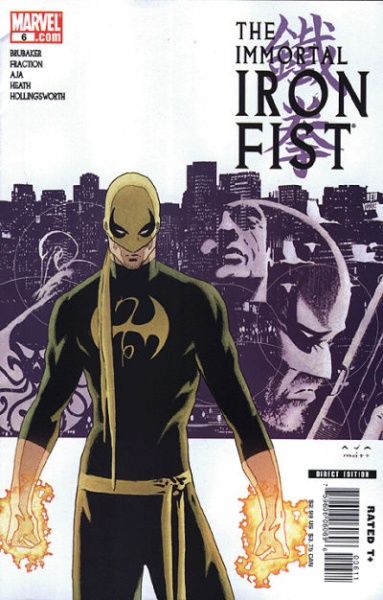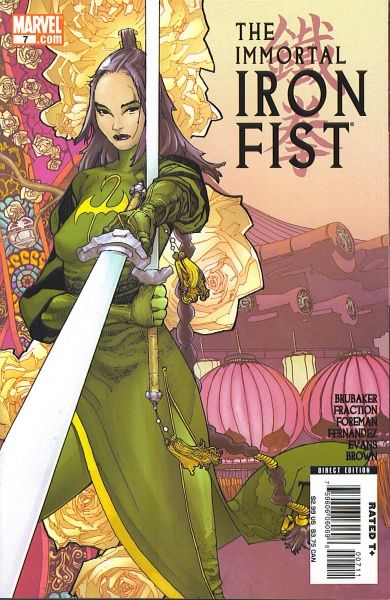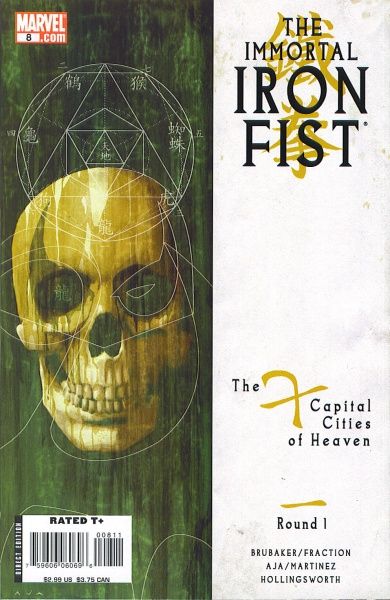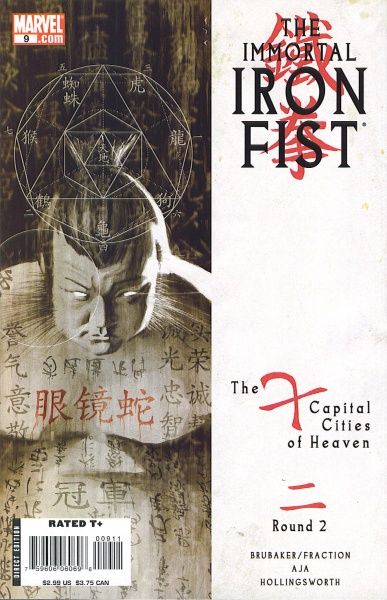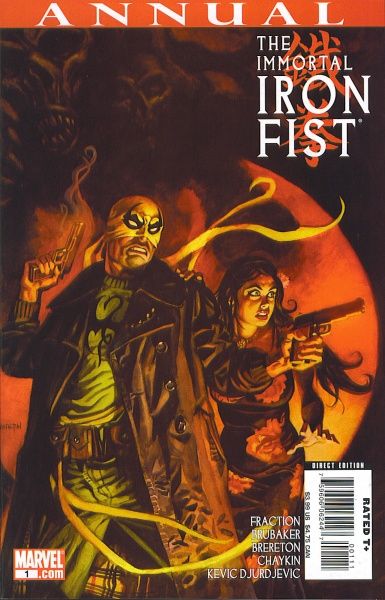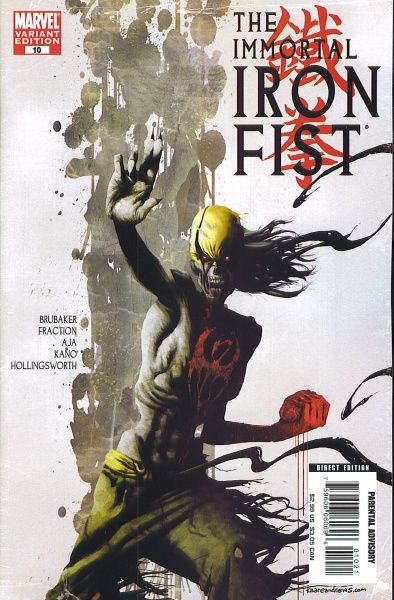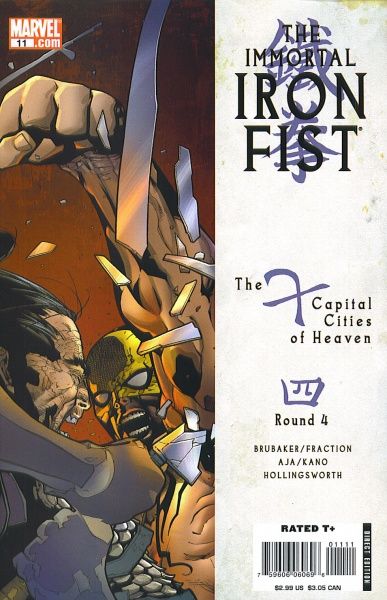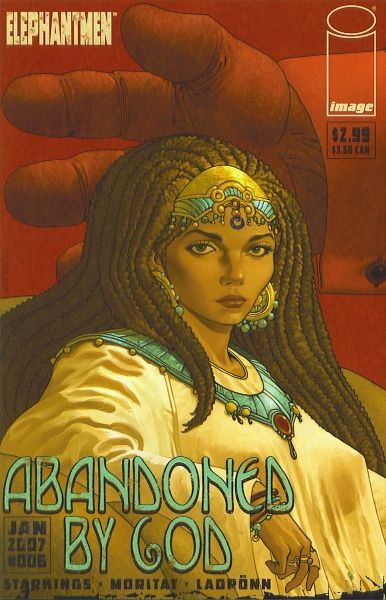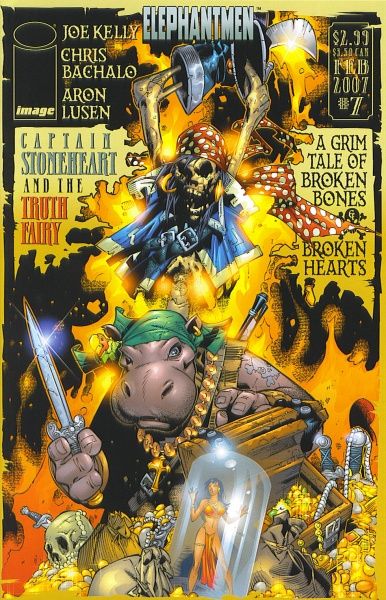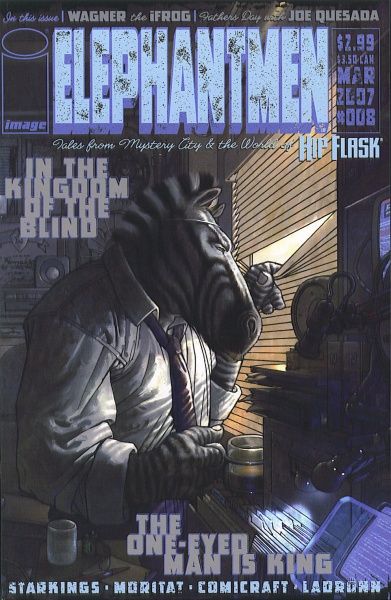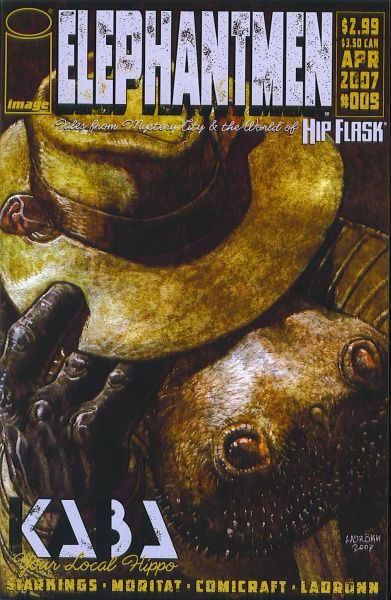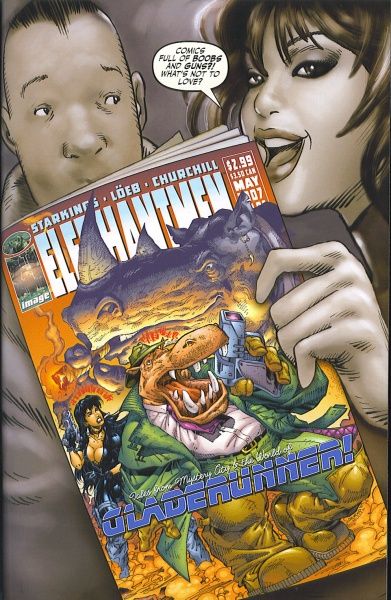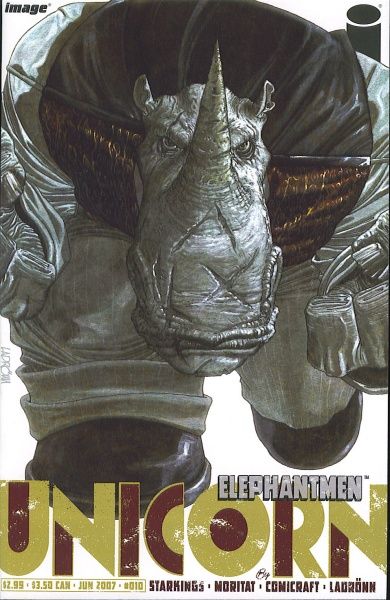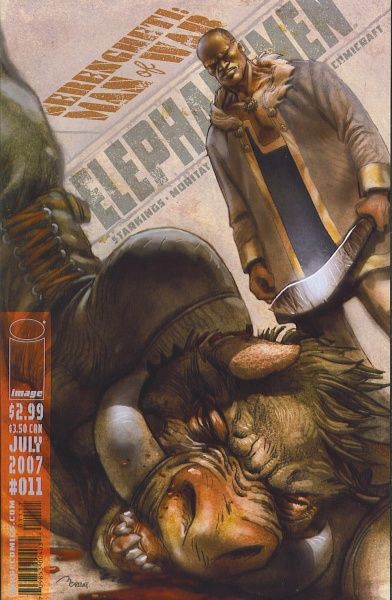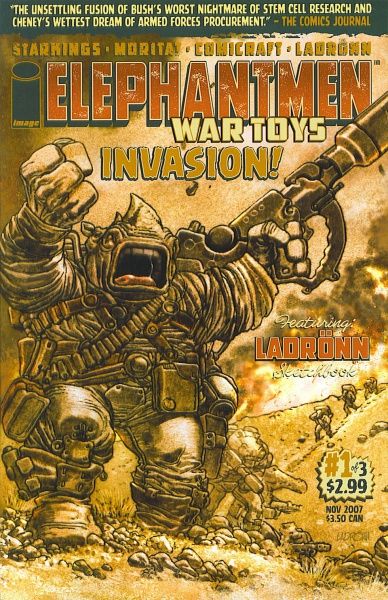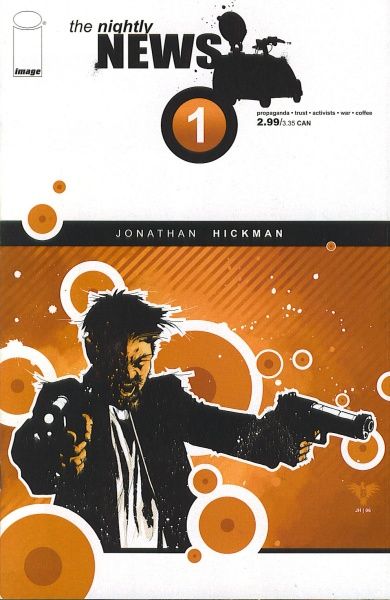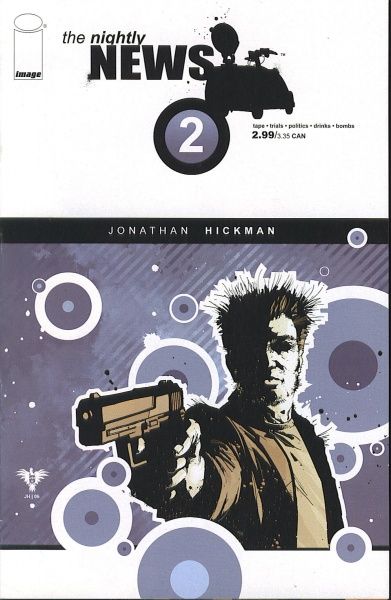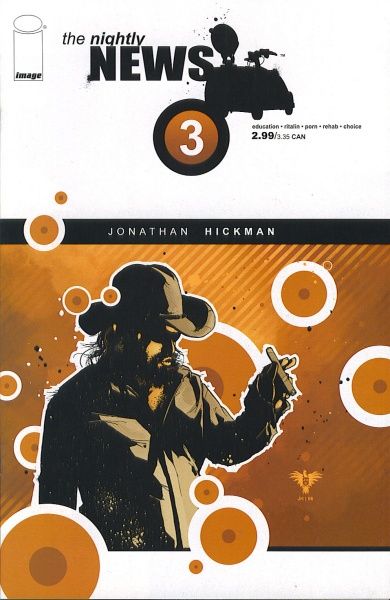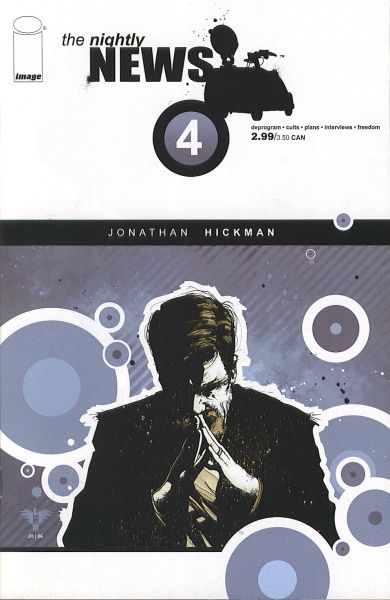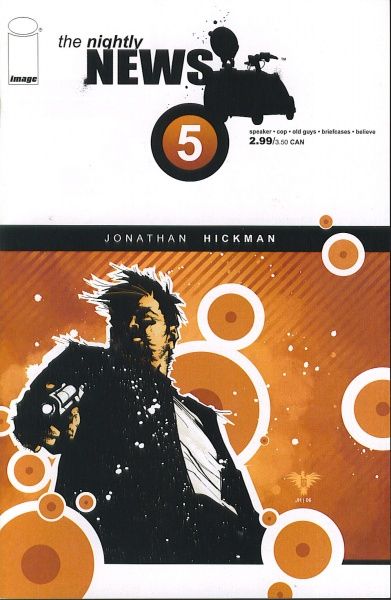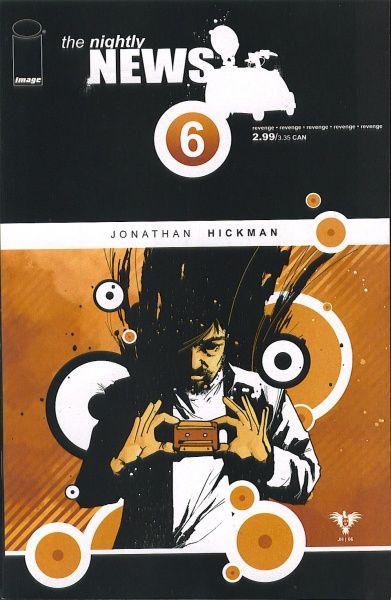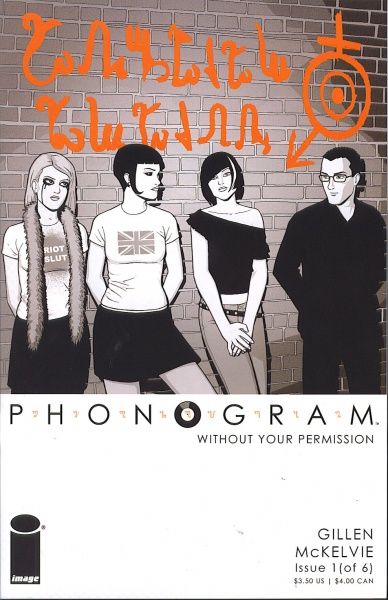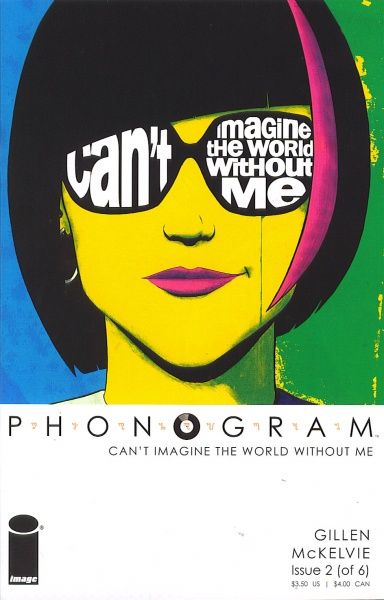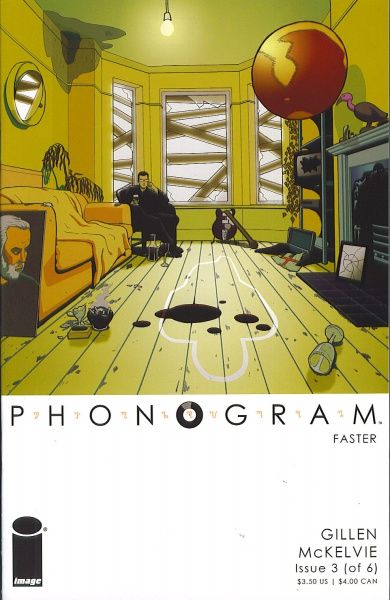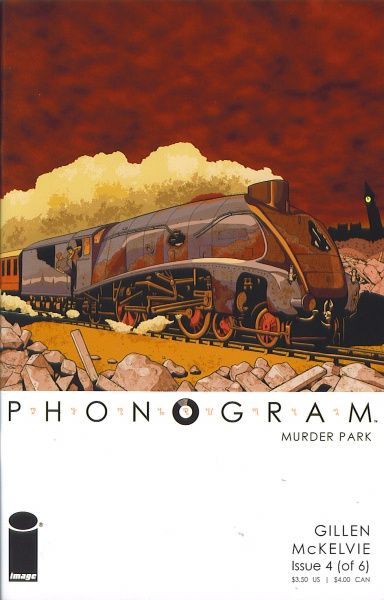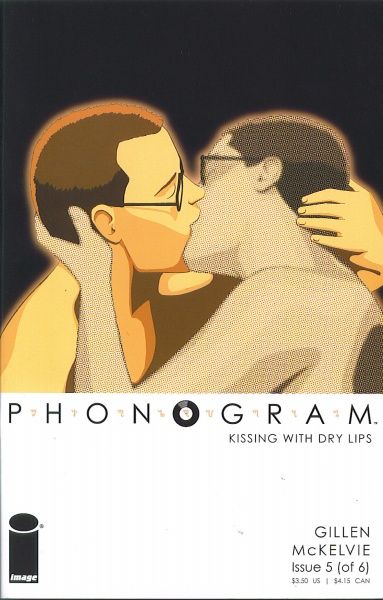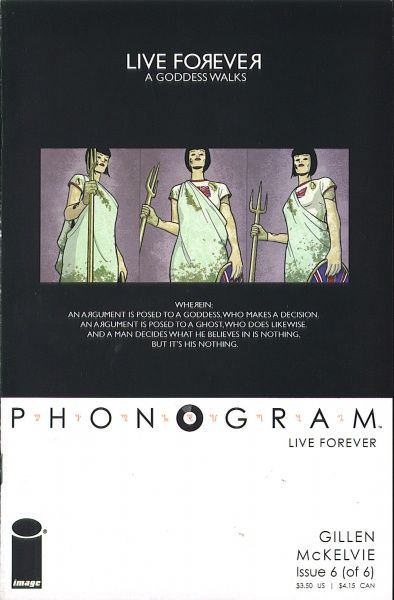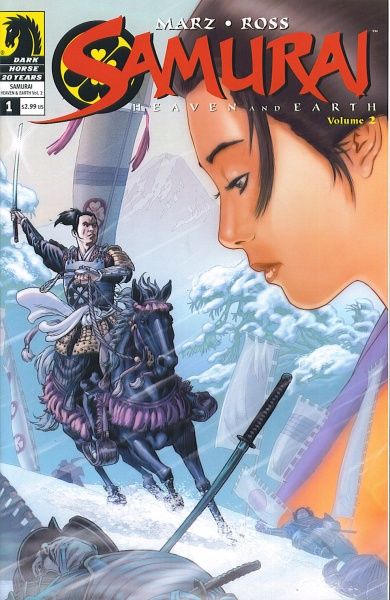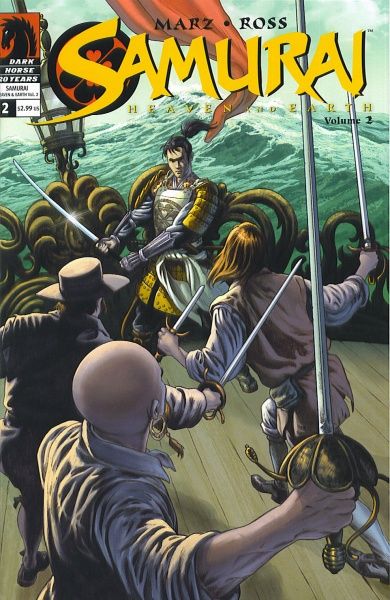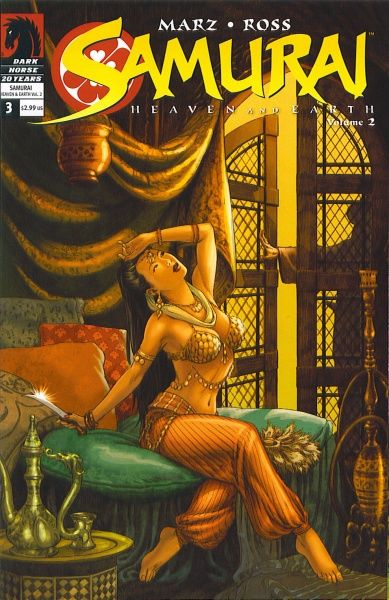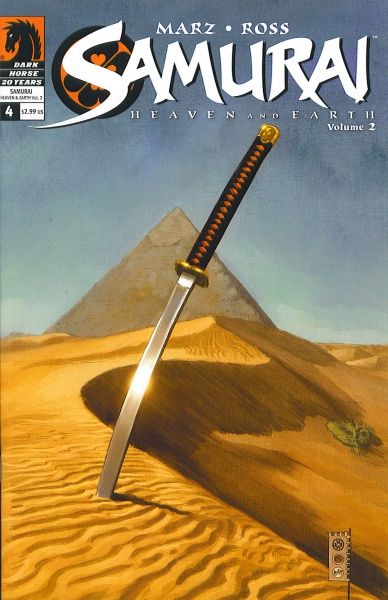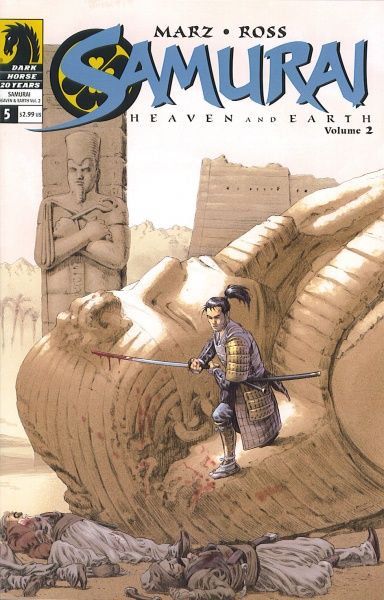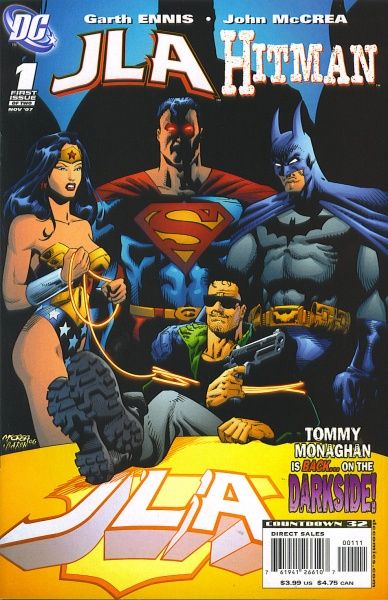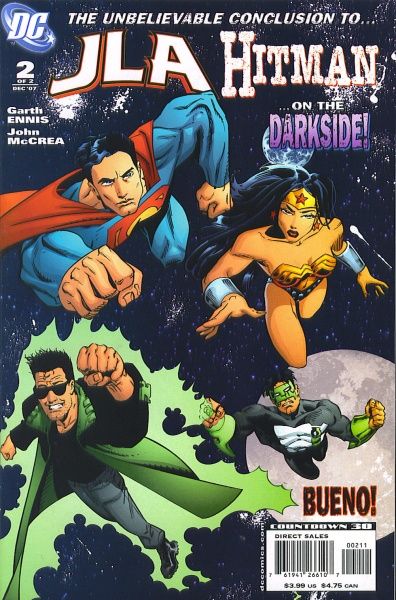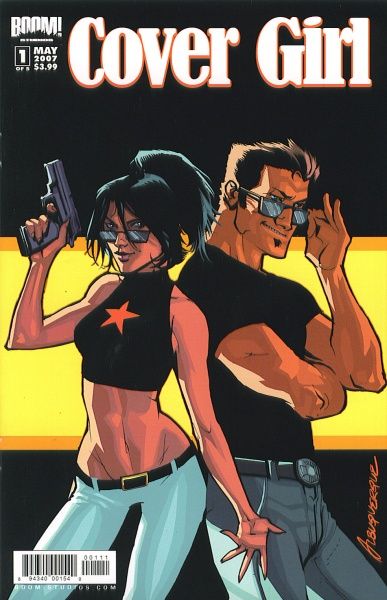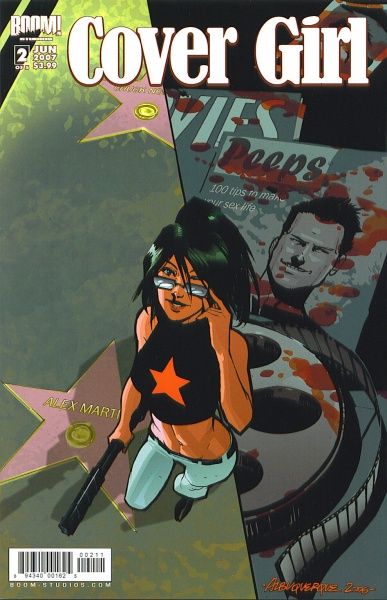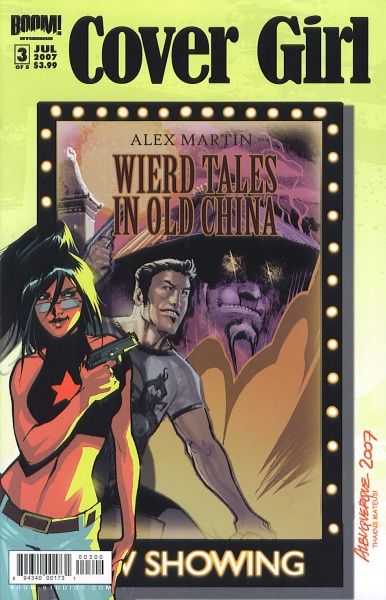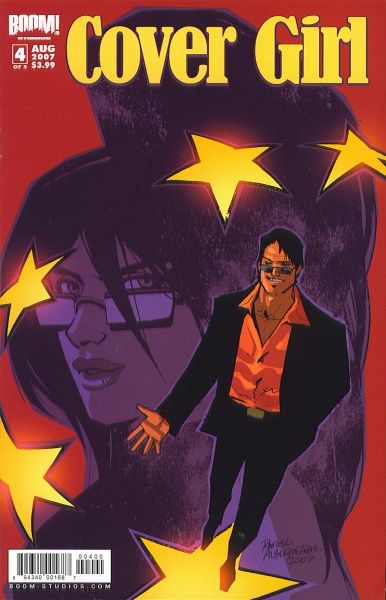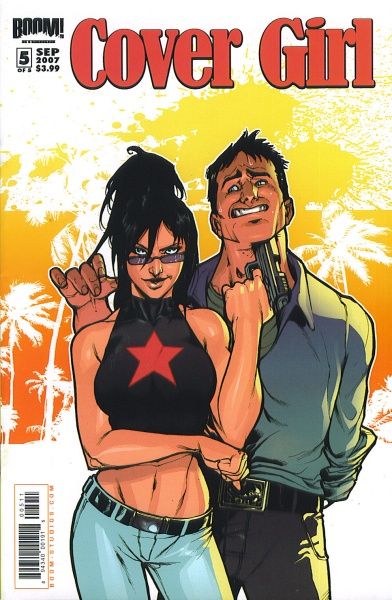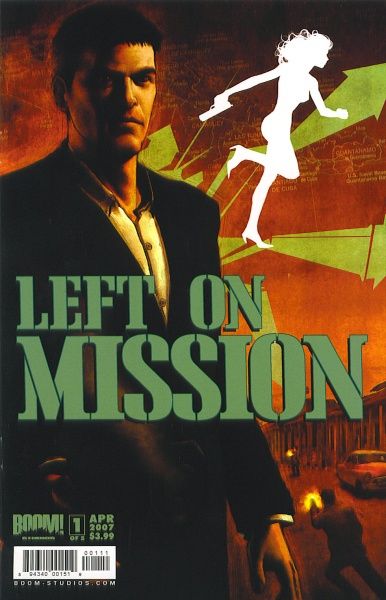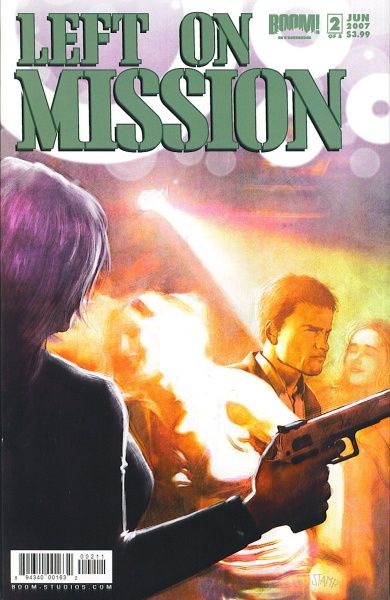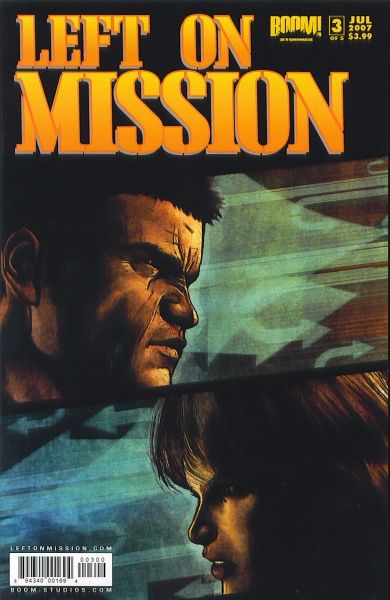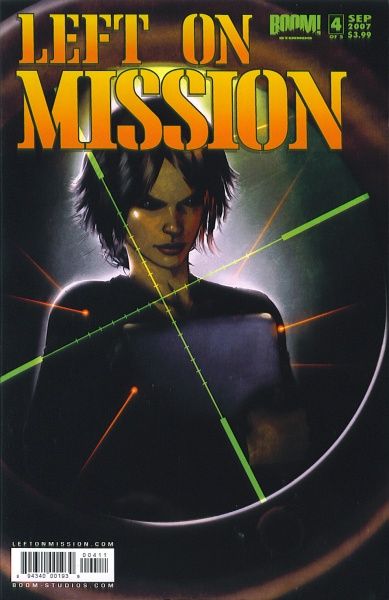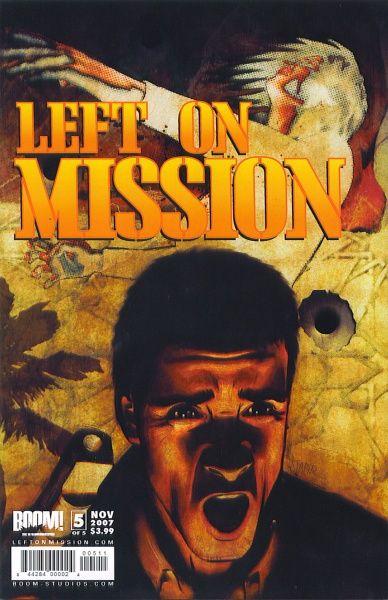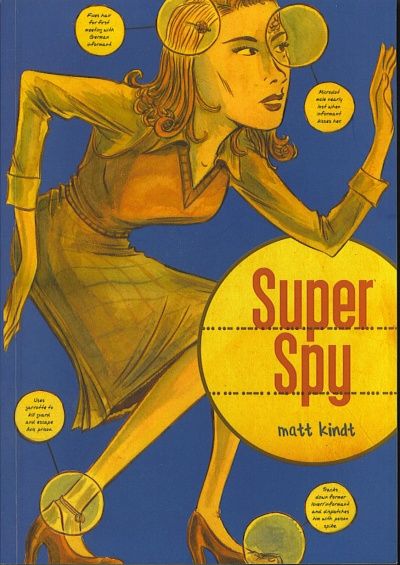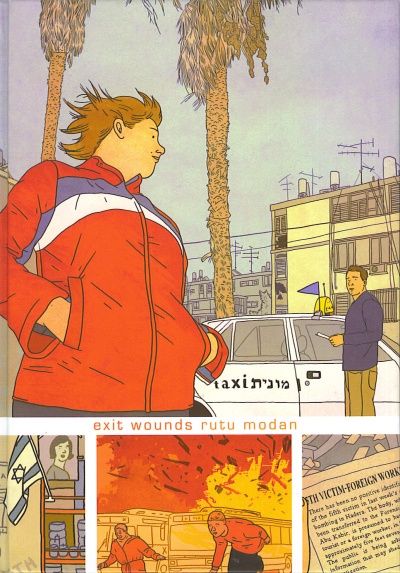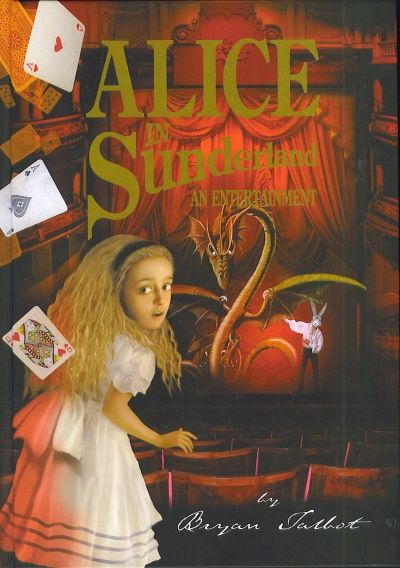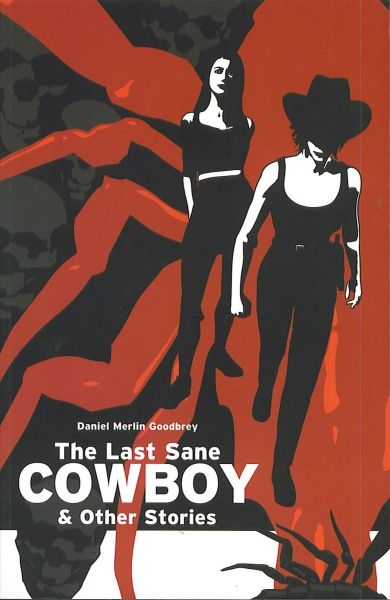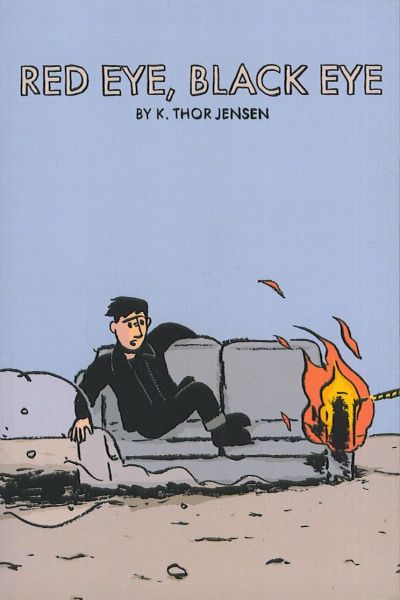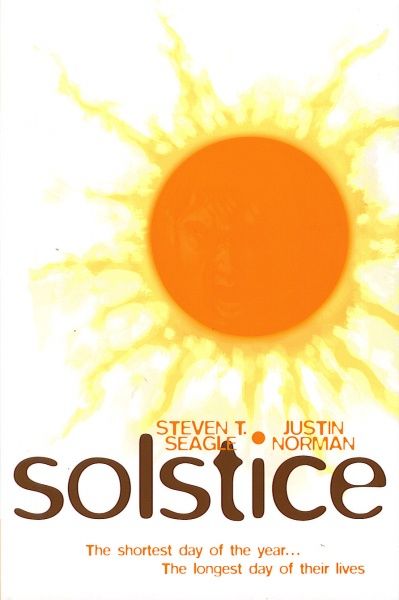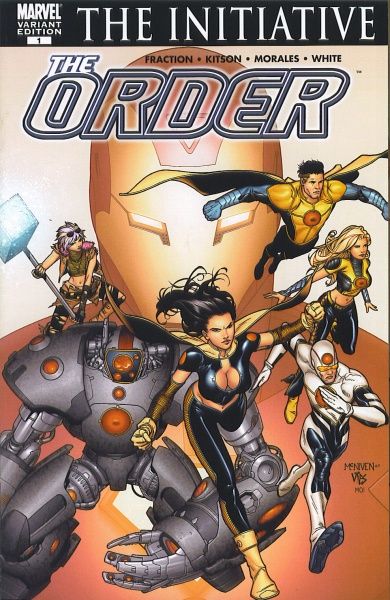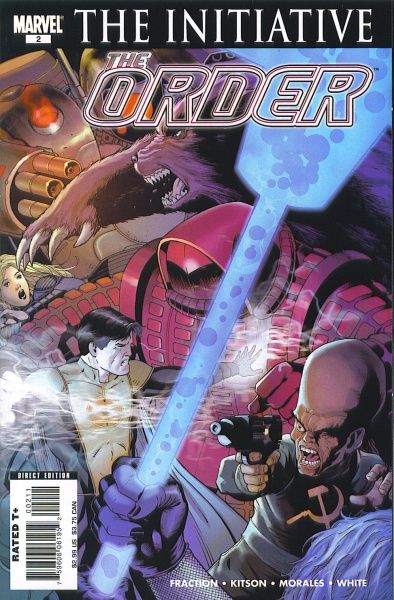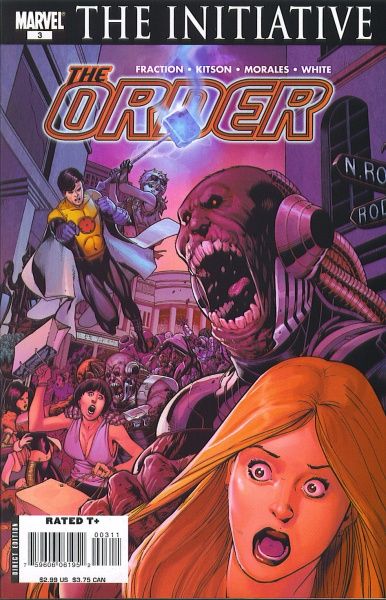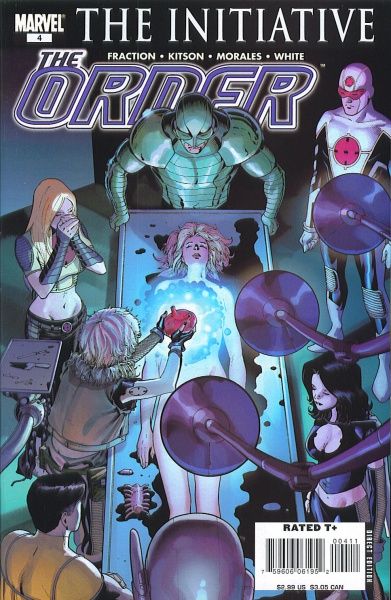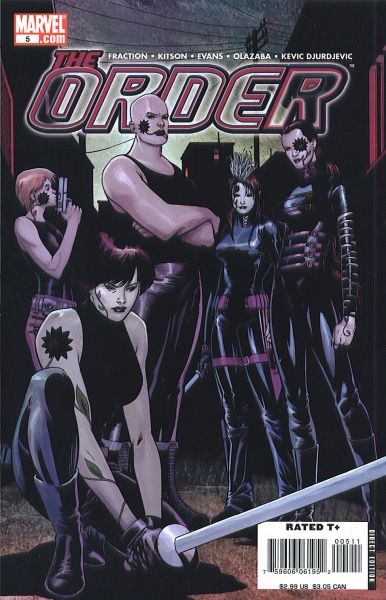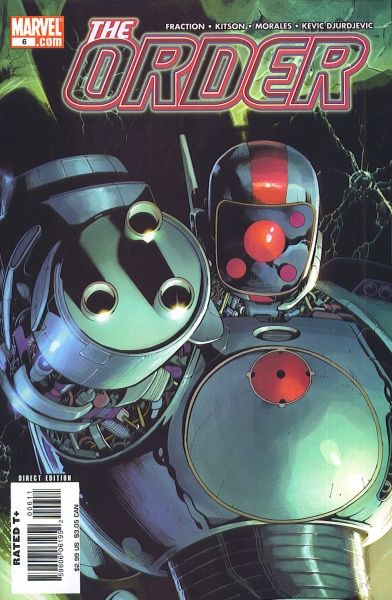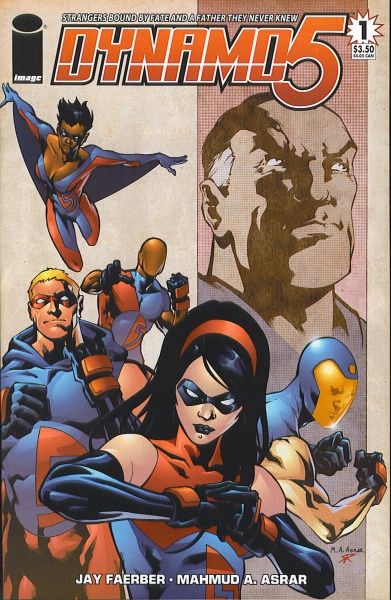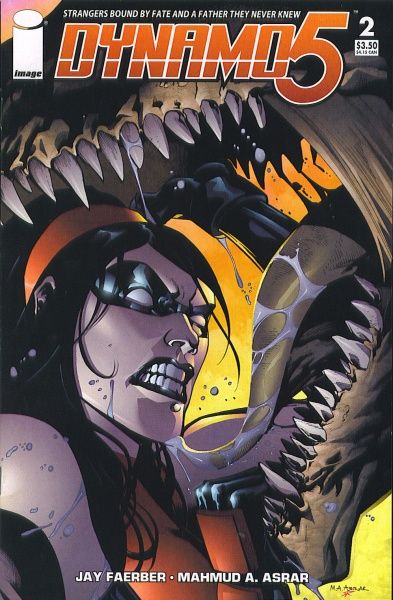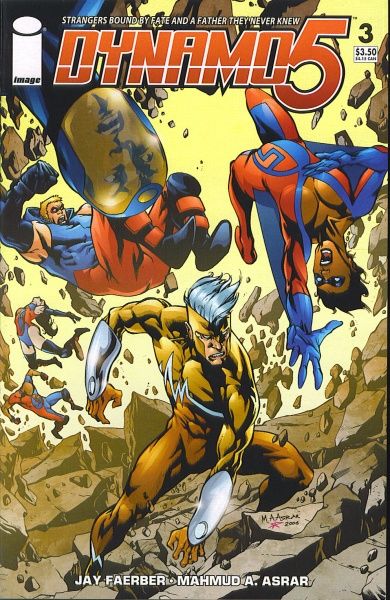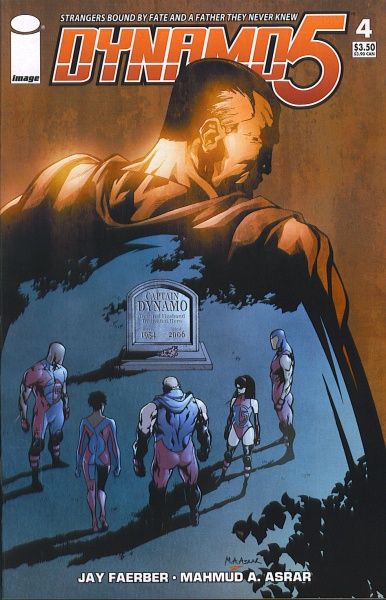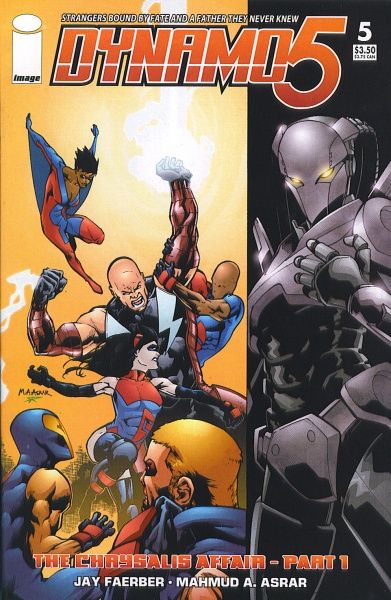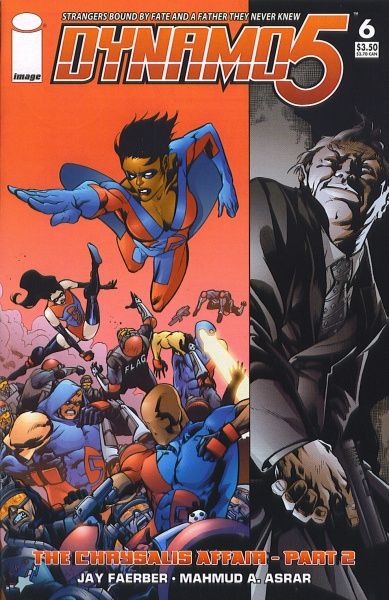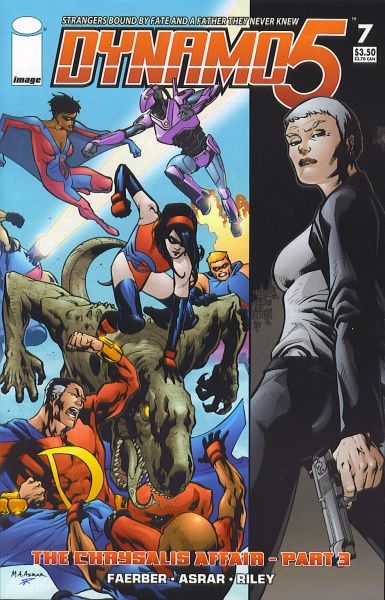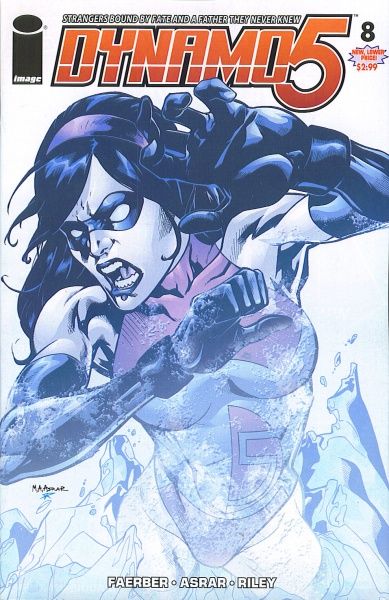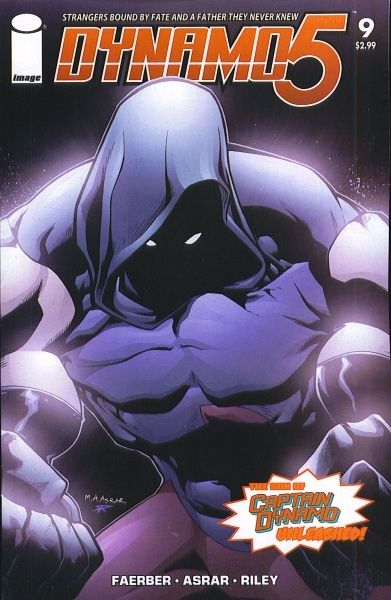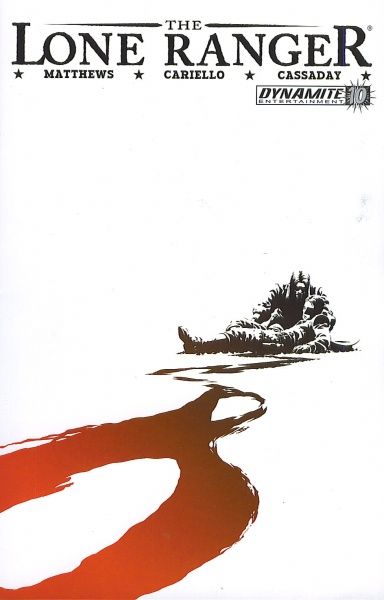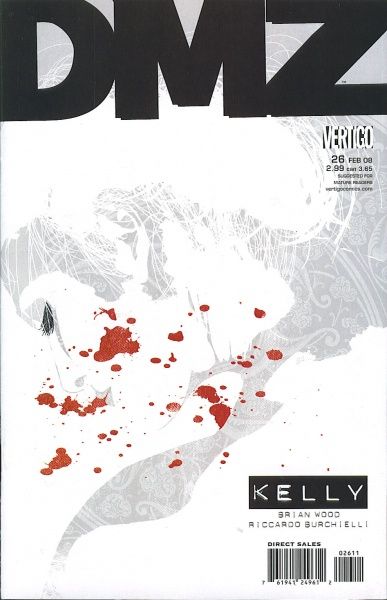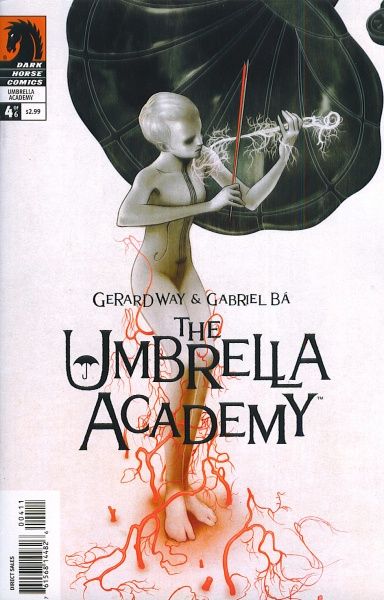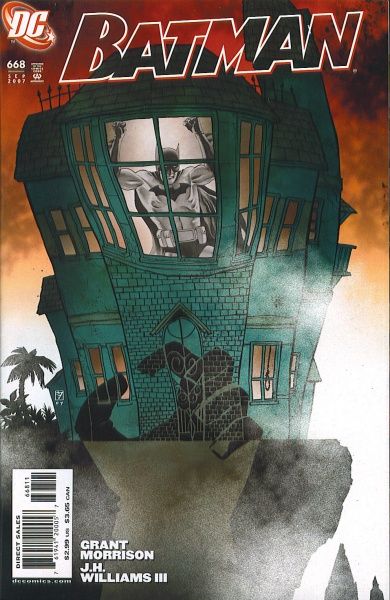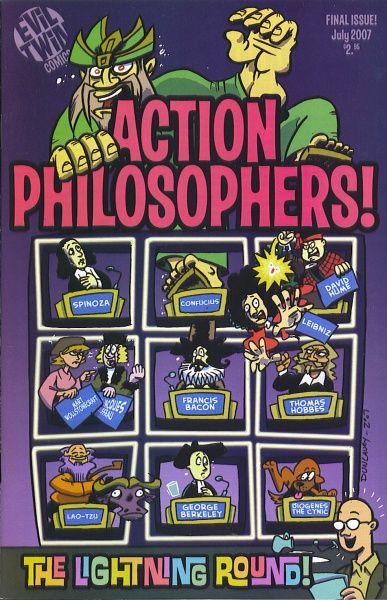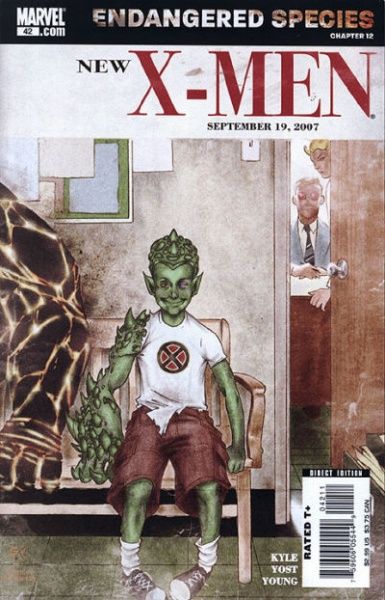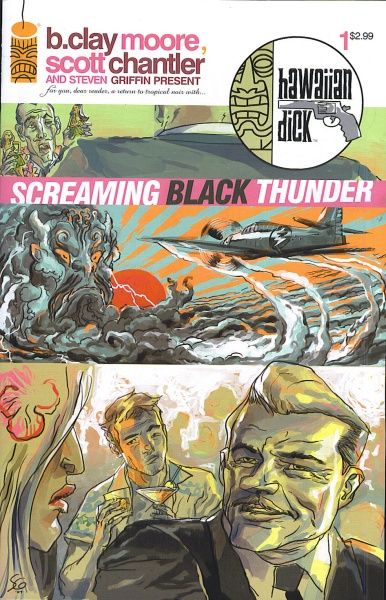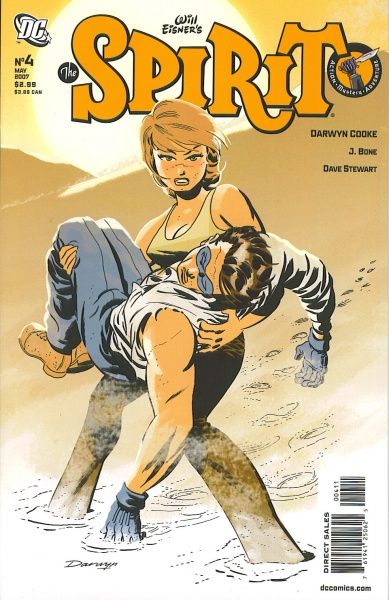I'm a blogger, so I'm contractually obliged to list the best comics I read this year. I'm always curious about these lists, because people write that they're the "best" but I'm not sure they read everything that came out. Unless you're like Our Dread Lord and Master, who made a deal with Mephisto to have comics downloaded directly into his brain, how can you know? So these are the best of what I read this year. Take that with a grain of salt, I know. Possible SPOILERS below, so be aware.
Best Ongoing Series.
This is a tough one. My favorite comic to read is Rex Mundi. I love the plot, the characters, and the artwork. I'm not sure if it's the"best," in that Arvid Nelson's writing, while solid,doesn'tamaze me. It gets the job done, and I enjoy each issue and the overall story,but I'm not sure. Fablesand Catwoman are the same way. Willingham has done a wonderful job creating these characters, and the major story arc this year, "The Good Prince," has been stellar, butwhile the plotting is great, the scripting isn't sensational. AndPfeifer gave us the best single issue of the year, Catwoman #72, in which Selina gave up her baby, but the past two issues have suffered as he got Selina ready to head off-planet (yuck). I have to stop being wishy-washy, don't I? Okay, here we go!
1. Casanova by Matt Fraction and Fábio Moon (with the first story arc finished up by Gabriel Bá).
Absolutely brilliant every time out, and seems to be getting better. Fraction manages to be kooky in one panel and touching in the next, and he packs more action and character development into 16 pages than most writers do in an entire 6-issue arc. Bá, who finished the first arc in February, provided excellent art, but, amazingly, when his brothertook over, it got even better. Moon's fluid lines and somewhat distorted figures fit in perfectly with the funky world that Fraction has created. Casanova is wonderful because Fraction challenges us in every panel andmakes us slow down to digest what we've read. In a very oddball comic book, he also works in some absolutely beautiful pages, as I've mentioned. When Zephyr betrays Suki Boutique in issue #11, it's amazing how devastated we feel for Zephyr, even though she's kind of a bitch and we only just met Suki. In a few short pages, Fraction manages to create, if not a romance between these two, at least an attraction, that makes Zephyr's mission even more complex. It's just one of the many reasons this book is so excellent.
2. Rex Librisby James Turner.
This adventurous series about a tough-as-nails librarian suffers a bit fromTurner's weird, only-occasional hard-boiled manner of writing dialogue (Rex seems to switch in and out of it, as somebody pointed out here not long ago), but that's a minor complaint, as the rest of the book is so fun. Turner's plots concern books thatalien rulers checked out and didn't return, books that suck people in andturn fictional worlds into actual realities, andstrange crystalsthatgovernments would kill to get.Turner makes sure we get our money's worth, filling each issue with so many details it's hard to catch them all, both in the writingand the art.His art, whileboxy, is still more dynamic than most of the art coming from the photoshopped realm of superheroes, and Turner throws in all sorts of weird stuff on the edges it's a pleasure to linger over each panel. Only 3 issues came out last year, because it's quarterly (they came out in February, May, and November, so the schedule is a little off), but they're a joy to read. If this comic is off your radar because of its erratic publication dates, go forth on find it. It's the best kick-ass librarian book you'll ever read!
3. Rex Mundiby Arvid Nelson and Juan Ferreyra.
Despite my reservations about Nelson's scripting, this is still my favorite book out there, and one of the best because of all the other wonderful things about it. Rex Mundi, in case you didn't know, tells the story of a man searching for the Holy Grail in an alternate-history version of 1930s France. The Grail quest (with Templars and Merovingians thrown in) might lead to comparisons to Dan Brown's The Da Vinci Code, but that's theonly similarity. Brown's novel is a coloring book compared to what Nelson has done over the course of 28 issues and 5 years. The Grail story is compelling, and the fact that France begins World War II isn't incredibly original, but Nelson has done a good job with it. The relationship between Julien Saunière and Genevieve Tournon iscomplicatedbut is well done, and the Duke of Lorraine, whotook over France and launched the war, is a brilliantly nuanced villain. Nelson also addsfake newspapers at the end of each issue thatgive the world more depth, and Juan Ferreyra's art is amazing. He colors each issue too, and makes thiscomic wonderful to look at. His characters are unique, he is comfortable with quiet moment and action, and he did a great job with the brutality of war.It's a great comic that isfinally on a decent schedule and it keeps getting better.Let's hope the movie is half as good.
4.The Immortal Iron Fistby Ed Brubaker, Matt Fraction, and David Aja.
I got on this bandwagon late,so the commenters here at the blog let me know it, and I'm glad they did, because this book the best thing coming out of Marvel right now. Brubaker and Fraction are building a weird world within the Marvel Universe, where strange underground railways are built below New York and Iron Fists have thwarted evil for centuries. Danny Rand is interesting enough, but the entire cast is great, even those who only briefly show up. And Frubaker has made Hydra menacing, which is always nice. Aja's art is rough but elegant, getting across the idea of a kung fu noir book very well, and the guest artists have been excellent. Not only do I like the book, I like that we get guest artists for the "past" segments of the story and for the one "out-of-sequence" issue (#7), which showed us a centuries-old Iron Fist. It's a nice way to contrast the various stories that are playing out in the comic.
5.Elephantmen by Richard Starkings and Moritat.
Starkings' science fiction tale, like all good sci-fi, illuminates issues that we grapple with in the present,such aswar, bigotry, genetic engineering, and an unfair class system. The book moves very slowly, I admit, but each issue usually has something that makes it great, even as it moves the overall plot forward. The main character, Hip Flask, is a world-weary private investigator, allowing Starkings to play with the conventions of noir. Obadiah Horn and his consort, Sahara, are two other beautifully realized characters, giving us a view of what happens when a human-animal hybrid seizes power within Los Angeles and the prejudices he and the woman he loves faces. Like all good villains, Obadiah Horn isn't completely villainous, and the tender moments he shares with Sahara make his dark side even more horrifice. Moritat's art isn't perfect, as too often he goes for simple lines where more subtlety might make the scene more powerful, but he does a good job bringing the 23rd-century world to life, both in the high-class towers of power and in the sewers where Hip Flask battles a crocodile-man. Plus, the book usually features back-up stories by talented creators and Starkings' interviews with other creators or a brief article about certain historical comics. It's a very nice package for your money, and the story, as it unfolds, is gaining in momentum and intensity. Plus,Hip Flask: Concrete Jungle (which I reviewed in this post) is a gorgeous and very good graphic novel.
Best Mini-Series.
I don't really like the trend toward more and more mini-series, especially from Marvel and DC (which is why I'm trying to skip them more often and wait for the trade, if I'm interested at all), but there were some very good minis out there this year. I'm always torn about the "best of the year," because so many bridge two years, so it's hard to know when to put them. Usually I wait until they're complete to judge, because The Umbrella Academy, as good as it's been, could still suck at the end, right? So it's not on this list. The first two, in fact, began in 2006, and because they finished this year and finished well, they make this list.
1. The Nightly News by Jonathan Hickman.
I was a bit disappointed at the ending of this comic, but I'm still putting it first because it challenges the reader so well, and for the most part, it worked. That it couldn't end the way, perhaps, it should have (based on the way it was going) does not detract from the monstrous ambition of the project itself. Jonathan Hickman gives us a weird assault on media and politics, spraying bullets both literally and figuratively at sacred cows and telling us all to open our eyes to the lies around us. It's polemical, sure, but it's entertaining as hell, and Hickman's art pushes this over the top. He uses photo reference, graphs, crazy circular designs, and eschews panels altogether, and it's a feast for the eyes. Hickman is the kind of creator we need in comics: someone who takes huge chances, even if they don't always work. They don't always work in The Nightly News, but when they do, it's exhilirating. I have a better review of the entire thing in this post, by the way.
2. Phonogram byKieron Gillen and Jamie McKelvie.
Thistour through Britpop history isn't perfect, but it's still a lot better than almost anything out there. David Kohl, the phonomancer (a magician who uses music), is a fantastic character, fully realized, atrue dick, yet someone we can't help rooting for. He's John Constantine's bastard son, and he skims through this series, learning very little until it's almost too late. It's a great series about how we define ourselves by external things, and perhaps that's not the best idea. I've read some reviews that aren't that impressed with Gillen's writing, which is odd, because his dialogue is spot-on and he doesn't overwrite, allowing McKelvie's dramatic and underrated art to tell the story, which is what a comic ought to do, right? As usual, I can direct you to this post, where I go into more detail.
3. Samurai: Heaven and Earth volume 2 by Ron Marz and Luke Ross.
I was hesitant to name this, because it's the middle series in a trilogy (and I hope we'll see the third one), so technically it doesn't tell a complete story. But this series, in which our hero, Shiro, is reunited with his love, Yoshiko, is a rousing adventure with a nice love story thrown in. It has a good, old-fashioned feel to it, and the idea of putting a samurai warrior in Europe and Africa in the 1700s has not lost its charm. Marz does a good job telling the story, but Ross' spectacular art makes the story even better. I hope that these two bring us the third part of this soon, or I'll be sad. And hey, here's my original review, just for fun.
4. JLA/Hitman by Garth Ennis and John McCrea.
This was two-part series, but each issue was extra-sized, so I'm going to call it a mini-series. It's the return of Ennis' greatest creation, Tommy Monaghan, the killer-for-hire who earned the respect of Superman. This series, more than just a nostalgic look back at what is one of the best series of the 1990s, shows once again that Ennis, when he's not in full-on "look how cool I am" mode, can write superheroes better than almost anyone. Tommy ends up in the JLA Watchtower, where the aliens who gave him his powers are coming back. The JLA needs to stop them, but they are losing their powers and can't fight effectively. Tommy does what he has to do. Superman, especially, is portrayed wonderfully, as he admires Tommy for his convictions but is repulsed by his profession. Batman, of course, sees everything in black and white, but Superman tries to see the good in Tommy, which is what Superman should do. Without being melodramatic, Ennis shows the differences between various heroes (not just the Big Two) and how their ideas about the world affect the way they fight evil. It's a great story, and McCrea's art, which isn't perfect for a superhero book, works well with them in small doses. I don't know how well it sold, but maybe itdid well enough to convince DC to finally release the rest of Hitman in trade paperback.
5. Cover Girl/Left on Mission.
These two series from Boom! Studios are two sides of the same coin, and both are very entertaining. The first one, written by Andrew Cosby and Kevin Church, is an action-packed romp laced with occasionally groan-inducing humor but often with smart, whipcrack dialogue, while the second, written by Chip Mosher and illustrated wonderfully by Francesco Francavilla, is a more serious spy story that doesn't end well for the participants. Both feature a male and female lead who circle around each other, trading barbs born of an inherent sexual tension (in the case of Left on Mission, they're former lovers). Both feature interesting espionage stories, and both wrap things up in ways that you really might not expect. Boom! still has problems getting their books out on time (see below!), but they have put out some very good comics, and these two mini-series are the best from this year.
Best Writer.
Matt Fraction. Well, considering two of his titles show up on my best of the year, that's not too much of a stretch, is it? Fraction is also writingThe Order (seebelow)and Punisher War Journal, and if he's burned out by all that, he doesn't show. Casanova, as I've pointed out, is brilliant, Iron Fist is a ton of fun, and The Order is the best superhero comic from the Big Two right now. So, of course, it doesn't sell. You'll be sorry in a few years when Fraction has re-invented the Marvel Universe! Right now, Fraction reminds a lot of The God of All Comics when he was writing Animal Man and Doom Patrol. He writes very trippy things, but he never loses sight of the fact that characters drive the story. Morrison occasionally forgets that these days, but he didn't back in the day. Let's hope Fraction doesn't, either. Plus, he became a father last year!
Runners-up: Ed Brubaker, Jay Faerber, Matt Kindt, Rutu Modan, Bill Willingham.
Best Artist.
J. H. Williams III. Perhaps this is an obvious choice, but his three-part story in Batman, "The Club of Heroes" (issues #667-669) were magnificent, as heused intriguing panel layouts, different styles, and a blend of pencils and paints to create the most beautiful comic of the year. His decision to draw each hero ina different style, even using benday dots in the second issue to denote an idyllic "comic-book" past, is stunning. (Tim Callahan, who is one of those bloggers I read with vicious envy, has two great posts about the art, one where he guesses the styles, and onein which Williams breaks down the "look" he was going for with each character. Damn, that Tim Callahan is one smart dude. Bastard.) The way he places the Black Glove design throughout the story arc is amazing too, as he fits it in seamlessly to show the pervasiveness of this mysterious villain. It's a gorgeous comic, and Williams shows why he's at the top of the game, artistically.
Runners-up: Jonathan Hickman, who has perhaps moved the way we view comics forward as much as Sienkiewicz did 20 years ago; Matt Kindt, Fábio Moon, Kevin O'Neill, Bryan Talbot.
Best Original Graphic Novel.
It appears like everyone is saying Exit Wounds for this category, and I don't want to be different, do I? Or do I?
1. Super Spy by Matt Kindt.
I could have flipped a coin, really, but in the end, Matt Kindt's World War II espionage masterpiece is a bit deeper and richer than Rutu Modan's excellent book. Just a bit, though, and it probably has to do with the fact that I simply like spy stories a lot. Kindt takes us deep inside the lonely lives of several agents who are just trying to survive in a shadowy world where no one can be trusted, and he not only makes these characters wonderfully real in very few pages, he continues to build tension throughout the book, despite each short "dossier" not necessarily linking to the one following it. Kindt structures the book so that it's out of sequence chronologically, and this allows him to play with the characters and confound our expectations. As we move through the book, an overall theme emerges, and one character, Sharlink "the Shark," comes to dominate the action. The Shark is a brilliant assassin, moving like smoke through the ruins of Europe, never where we expect her, and striking like lightning before disappearing again. She adds a sense of horror to the already topsy-turvy world of spying, because her arrival is so unexpected, yet we know she will complete her mission and someone will die. Kindt's magnificent art evokes not only the time period, but also the fluidity of the world in which spies live. His people are bedraggled and almost ghost-like, and his backgrounds loom up around them, creating prisons out of alleys and tenements. I really can't recommend this book enough. It's a glorious achievement. My original review is at the bottom of this post, in case you're interested. Other people liked it, too.
2. Exit Wounds by Rutu Modan.
I have read a few comments by people who were unimpressed with Modan's tale of an Israeli who thinks his father was killed in a bombing and goes to find out if it's true. Koby Franco finds out that his father was seeing a younger soldier, Numi, andthe two of them tryto discover what happened tohim. As they grow closer, the book becomes much more than a simple mystery. This is a story about fathers and sons, what binds people together, what tears the apart, and why, even if a persondoesn't deserve it, others still love and forgive them. Koby is angry at his father and takes it out on Numi, Numi is angry atKoby's father and takes it out on him, and as this becomes their lovestory, it feels more real than most becausetheir souls have been laid bare and they can't hide from or lie to each other. The people who have not liked it say it's just a simple story that goes nowhere, but they're missing the point. It is a simple plot, but the plot is incidental. It's an emotionally searing masterpiece that strips away all thepretense in relationships. The question becomes, can these characters handle such honesty? It's absolutely brilliant. As always, I link to my own review (the last one in the post), but point out that Matt Brady thought it was good as well. Dare you disagree with Matt Brady?
3. Alice in Sunderland by Bryan Talbot.
Isaid this when it came out, and I'll say it again: there was not a more impressive-looking comic book that came out in 2007.I have never been a huge fan of Talbot's art, but in this book, he shines. Pencil art, painted art, multimedia presentations, homages to old British comic strips, reproductions of medieval art, including the Bayeaux Tapestry - this comic has it all! It'sa stunning book to look at, as each page is packed with so many details you could read and re-read it dozens of times and still find new things to marvel at.Talbot takes us on a journey through British history, using thenorth-east region of England as his focus, and it becomes a swirling, dizzying trip that encompasses not only history, but art, society, science, and industry. Although his ultimate point - that we're all immigrants, so we ought to be nicer to each other - isn't revolutionary, this is truly a case of the journey being more important than the destination. As we follow Talbot through the centuries, we gain a greater appreciation of the things that tie us together and how everything is interconnected. It's a remarkable book. Of course, you could read my original review, or you could start here and go through Steve Flanagan's brilliantly different review.
4. The Last Sane Cowboy and Other Stories by Daniel Merlin Goodbrey.
A surreal classic, this comic tells stories of analternate (and weird) Earth, where giant scorpions block access tosaloons and kids play fetch with their dolphins in the park. Goodbrey doesn't just bring the bizarre, though. The stories speak of longing, sadness, loss, regret, and love ... just in a completely odd way.By heightening the weirdness of theoverall situation, Goodbrey is able to connect to deeper human truths and illuminate them. Goodbrey has a story in the Giant-Size Avengers that came out recently,which is thebest in the book, but ifyou really want to see his chops, pick this sucker up. Here's a review by someone other than me, while mine is here.
5. Red Eye, Black Eye by K. Thor Jensen.
Back in February, when I reviewed this, I mentioned that it works because Jensen is willing to portray himself as a dick. He's not a dick in the entire book, but he does dickish things occasionally, and these warts allow us to view him with some sympathy even if we don't always like him. This is a 9/11 book that's not about 9/11, but how it subtly has affected us all. Jensen takes a tour of the country in the months following the attacks, and through his meetings with others (that he "met" on the Internet), we get a sense of a truer America than the one politicians rant about. It's less flashy than the other big 9/11 book that has come out, Can't Get No, but it's much more powerful for being more subdued. Here's another review, just for comparison's sake.
Man, lots of good graphic novels this year. I didn't even mention Cairo (that link is A. David Lewis' review, which is excellent), The Salon (here's a nice review), Elk's Run (this is my review, because I couldn't find another one), The Black Diamond Detective Agency (that's Jog's review, so you know you can trust it!), Blessed Thistle (Sean Carroll gives us that linked review),or Midnight Sun (I haven't reviewed this yet, so that link is to John Morris'). Head to the bookstores, my good people!
Best Collected Edition of an Older Work.
Solstice by Steven T. Seagle and Justin Norman.
Had thisbeen a 2007 production, this probably would have been the best graphic novel of the year. But it's an older work, back in print, and it's utterly spellbinding. Seagle tells the story of a young man and his domineering father's quest for the Fountain of Youth, using this fanciful conceit to examine mortality and how an older generation gives way to a newer one. It's also a fantastic telling of a difficult father-son relationship, one that is a bit more contentious than most (probably) but not beyond the realm of reality, which gives it its power. Norman (who now goes by the name of Moritat) is excellent, too, whether giving us the lushness and darkness of the South American jungle or the snobbishness of the corridors of power, and his faces amplify Seagle's words, showing the unspoken things behind the dialogue. Seagle is a great writer when he's not doing superheroes, and this is a brilliant book. My original review is here, just so you know.
Runners-up: Yesterday's Tomorrows: Rian Hughes' CollectedComics (review here); The Ice Wanderer and Other Stories byJiro Taniguchi (review here).
Best New Title.
Ah, new titles! The breath of fresh air in the stolid comics scene! But what's worth your time?
The Order by Matt Fraction and Barry Kitson.
Well, if I like Fraction, I'm going to like the titles he writes, right? And this is an excellent superhero comic, the best one coming out of Marvel right now. Fraction has taken the Initiative idea and done a good job with it. He set up a team, knocked them down because of a lapse in morals, and brought ina new team. The new team can't last because of the nature of their powers, and I do hope Fraction starts replacing them too, because it will be interesting to see if he can make a superhero book with a rotating unknown cast work. The characters are interesting and soap-operatic without being too over the top, and whenever Tony Stark drops by (either in person or on the phone), the book gets a nice little jolt of weird energy. Fraction is creating a mythology from scratch and doing it around some very neat bad guys, such a zombie hoboes and a girl gang called the Black Dahlias, and Kitson's straight-forward superhero look, oddly enough, works well with it. And, of course, no one's buying it. I expect it to be cancelled soon, but at least we'll have what little there is!
Close second: Dynamo 5 by Jay Faerber and Mahmud Asrar.
Faerber and Asrar's group superhero book is less weird than The Order, but it's much better than the two Avengers books and JLA. Faerber's idea - a superherowith five unique powersslept around, had five kids by five different women, dies, and his wife finds the kids and activates their powers, which are her husband's, but equally distributed to them - is goofy in a purely comic book way, but that's just a way to get five disparate young adults together and have them bang into each other as they come to grips with the fact that they're half-brothers and-sisters, all while fighting evil villains! Like NobleCauses, Faerber's other Image superhero book, the conflict comes directly from the characters, not byplot devices, which makes it a better read than thebig-selling group superhero books, which often shoehorn personalities into whateverplot they're running through. Asrar's pencils, which have a hint of Brian Steelfreeze and Bryan Hitch in them, arewonderful to look at, and I hope he stays a long timeon the book instead of heading off to greener pastures at DC or Marvel.If you're dissatisfied withNew Avengers (and really, who isn't?), check this out!
Runners-up: Welcome to Tranquility (issue #1 shipped in December 2006, but that's close enough, isn't it?);Northlanders (way too early to tell, but it has tons of potential).
Best Cover.
1. The Lone Ranger #10 byJohn Cassaday. This is a gorgeous cover, with Cassaday using the negative space brilliantly and cleverly fitting in the iconic mask. It's a powerful image, made more so by the perspective, as John and Tonto seem almost crushed by the white. Cassaday has a future in this business, I imagine.
2. Elephantmen #6by Ladrönn. I mentioned how great this cover was when it first appeared, back in January. Sahara's steely-eyed gaze contrasts with the gauzy silk she wears, and her softness is contrasted by Obadiah's powerful hand reaching possessively toward her. There's the wonderful hint of eroticism in her figure, too, which contrasts with Obadiah's overwhelming sexuality. Ladrönn has done some great covers for this book, but this one is the best.
3. DMZ #26 by Brian Wood. Wood uses white in the same effective way that Cassaday does to highlight Kelly's blood and even her femininity, as her graceful eyelashes stand out starkly against the background. The pattern in the shadows helps create an image of Kelly even before we get to the story, which is about her death and what life meant to her. "Blood on snow" is a cliche, I know, but there's a reason: it's powerful.
4. The Umbrella Academy #4by James Jean. Jean's creepy cover also uses white as a contrast (I'm sensing a trend here!). Vanya, shown after her transformation into the White Violin, is playing an instrument of nerves, while blood-redarteries entangle her feet. The image is horrifying but shows the delicacy with which she plays, which makes her turn to evil all the more worrisome. Jean is, of course, a wonderful cover artist, and this is one of his best.
5. Batman #668 by J. H. Williams III. I'm not the first to notice that Batman is trapped in a crooked house, much like the one Prometheus used for a headquarters back in the Morrison-penned JLA, and I wonder if that played any role in this cover. Probably not, but we can speculate, right? Williams, like his cover for Batman #667 (also a great one),places figures in frames, which makes them seem not only imprisoned, but slightly out of sync with the rest of the drawing, and it'san unsettling effect. Meanwhile, the Black Glove lurks below, coming up out of the ground (from Hell?). A wonderful image.
6. Action Philosophers! #9 by Ryan Dunlavey. The final issue of this excellent series features the most fun cover, from Confucius climbing over the logo in a King Kong-like rage to David Hume and Liebnitz battling it out in the square. Dunlavey always had good covers for this series, but this one is the goofiest, and therefore the best.
7. Casanova #10 byGabriel Bá. I went over this when it came out, because there's so much going on in the picture. The mask and the camera film a young lady apparently committing suicide, even though the gun looks extremely phallic and even her expression looks like a porn actress'. It's an extremely disturbing image when you look at it, evoking anonymous, filmed sex and tragic death. Uncomfortable but gripping.
8. New X-Men #42 by Skottie Young. Young's Norman Rockwell tribute isn't all that original - Kaare Andrews homaged his paintings in a few Hulk covers a few years ago, and there's a new Moon Knight cover coming out that is also a homage - but that doesn't mean it's not expertly rendered and unlike most of what Young does. The oddness of the mutant on the cover (I can't remember his name, sorry) helps make the cover more memorable, as well.
9. Hawaiian Dick: Screaming Black Thunder #1bySteven Griffin. Griffin nicely captures the ethos of the comic, with a Hawaiian feel but a murkiness beneath it that goes along with the noir tone. The cover encapsulates the issue well, too, and the middle image is a magnificent drawing on its own. Byrd's expression in the bottom panel is priceless, too.
10. The Spirit #4 by Darwyn Cooke. I was never a huge fan of Cooke's version of The Spirit, but there's no denying the guy can draw the heck out of anything. This is his best cover, as we get the nice role reversal, but I also like Silk Satin's expression. She is resolved to get out of the dilemma, but there's a slight hint of exasperation that she has to carry this unconscious doofus, whom she has never respected anyway. It's that nice subtle touch that makes Cooke such a good artist.
Publisher of the Year.
This is difficult. Two years ago it was obviously Image, and last year I split it between Archaia Studios Press (for serial comics) and First Second (for graphicnovels). I hate to repeat myself, but it's tough, especially because I like a lot of Image books. Evenif I don't like an Image book, I like their business model. The biggest problem with publishers these days, it seems (and DC and Marvel aren't immune, unfortunately) is tardiness. Archaia continues to put outgood-to-very good comics (Awakening, The Engineer, The Killer, Killing Pickman, The Long Count, Mouse Guard, Robotika, The Secret History, Some New Kind of Slaughter, just to name a few), but their schedule has become hopelessly late. It's the same thing with a lot of publishers, and it's frustrating, because it kills any momentum a book might have. I'm not sure if it hurts the company in the long run, but I guess we'll see.
So I'm going to go with AiT/PlanetLar, Larry and Mimi's love child. It's kind of a"lifetime achievement award," because they consistently put out fantasticcomics, but this year we gotThe Black Diamond, which was a very solid mini-series (and came out relatively regularly!), TheHomeless Channel, which I enjoyed but notas much as a bunch of people who really dug it, First Moon, an unusual take on werewolves, a re-issue of Giant Robot Warriors, which was awesome squared,and The Last Sane Cowboy and Other Stories. Plus, I keep hearing good things about Monster Attack Network, even thoughI never got it after I pre-ordered it through Previews. Weird. I'll have to ask the retailer what happened to it. But that's a story for another day! Not only do we get good stuff throughout the year from AiT, but Larry makes sure all his stuff is always in print, so if, for some reason you've been living in a Nepalese cave for a decade and haven't gotten Scurvy Dogs yet (the only logical reason for you to have missed it), you can get it right now! Or, if you want to find out how Danielle Henderson survived an Alaskan fishery, you can! Or, if you want to read excellent (and humorous, given what he'sdoing now) essays from Warren Ellis,you can! I don't always like what AiT/Planet Lar puts out, but they consistently make sure there are quality books of many different genres out there for people who are bored with superheroes. And that's a cool deal.
The Nuke LaLoosh Award.
Every year I try to find a relatively obscure artist who I think deserves wider recognition. Why not a writer? I don't know. Maybe I should do that. This year it's a bit difficult, because there were a lot of choices, but again, I'm never sure exactly how "obscure" an artist really is. I decided on Brian Koschak, who drew Jeremy Haun's noir thriller NarcolepticSunday (which I reviewed here). Koschak has a distinctive style, with thick lines and heavy blockiness to a lot of his figures and objects. His work has a nice flow, though, as he seems comfortable with both static scenes and action scenes. He also does very well with panel layouts, drawing our eyes where they need to be and go. He needs some work, of course - in Narcoleptic Sunday, his two main women look too much alike - but he has a lot of potential.
Runner-up: Steve Morris, who brought us Blessed Thistle back in February. His"realistic" styleheightens the horror in thatcomic, and he has a very nicegrasp of the technical details of life. I hope he does more work.
The "Where Have You Gone, Joe DiMaggio?" Award. (I should change this to The Winter Men Award. Remember The Winter Men? What happened to it?)
Of course, every year, there are books that simply disappear. An issue or two comes out, and then they're gone. Where do they go? I try to keep track of the publishers, because occasionally the publisher simply goes out of business, but often, they just keep soliciting books, but the ones I'm concerned with never show up. This is also becoming harder to judge, because so many books are late these days. No wonder people are waiting for the trade! So let's look at the nominees.
I'm still waiting for The Facts in the Case of the Departure of Miss Finch by Neil Gaiman and Michael Zulli. It was solicited in June 2006, then resolicited in June 2007, and it's still not out. Maybe the solicitation will become an annual event! Wouldn't that be neat? But this award goes to books that actually got an issue out and then disappeared, not things that were solicited but never appeared. This book, however, is approaching Hall of Fame status.
A holdover from 2006 is Pistolfist: Revolutionary Warrior. Issue #1 came out in October 2006, the second was solicited for release in December (and all four issues were in Previews), but it's never shown up.
Athena Voltaire: The Legend of Mu-King was solicited in January 2007 but has never appeared. I guess it doesn't count because no #1 ever showed, but it's still vexing.
Boom! Studios continues to put out some good stuff, but it's very rarely on time (the two mini-series cited above did ship regularly, which was nice). The Holy Grail of Boom! Studios is G. I. Spy, an issue of which came out in August 2005 but which hasn't been since. But they have others, too: Whisper #1 (a holdover from last year; it came out in November 2006, butdisappeared after that);Mr. Stuffins (#1 shipped in April, nothing since) and Hero Squared (#6 came out in May; where's #7?). Both have been solicited, but don't exist! Station #1, which was supposed to come out in May, has also never been seen by mortal eyes!
The Black Coat mini-series, which was very good, got a sequel this year, The Black Coat: "... or Give Me Death". Issue #1 was pretty good ... when I read it in May. Nothing since. (Apparently, they're resoliciting this soon. I hope so!)
I hesitate to put Gutsville on this list, because two issues did come out, one in May and the other in September, so maybe the schedule is just a four-month cycle. If so, we should see another in January! (According to Frazer Irving, issue #3 is in the works, so we'll see it when we see it, I guess.)
Another fine mini-series sequel is Death and the Man Who Would Not Die, the first issue of which came out in June. Then, crickets.
Local is another very good series that has taken forever to come to the consumer. Issue #9 showed up in May, #10 in August, and we haven't seen anything since. It should have wrapped up by now, according to the solicitations, and I'm dying to read it. Please finish it, Misters Wood and Kelly!
But, for the unprecedented second year in a row, our winner is Fell. Sheesh, why do we have to wait so long? Ellis writes Iron Man vs. Hulk scripts in his sleep, but this doesn't show up. Templesmith is still working on various things as well. What's the holdup? We actually got two issues this year - #7 came out in February, and #8 in April - but #9 was in May's Previews, #10 was in August's, and now they've smartly stopped soliciting it. Is the book dead? That would, you know,SUCK! Good job, gentlemen - two years running you've made me wonder where the hell one of the best books on the market is. Grrrr.
Disappointment of the Year.
I hate to do this, but I'm going to have to say The God of All Comics. This was not one of Morrison's great years, and with him, the expectations are so high (for me, at least), that when he puts in a year like this one, it's hard not to call him on it. Let's review: incredibly late scripts on WildC.A.T.s and The Authority, to the point that we went the whole year without issues of those books, which has effectively killed Wildstorm. Uneven work on All Star Superman, with only four issues coming out and two wasting time on Bizarro World. More uneven work on Batman, where he did give us "Club of Heroes," which is an excellent story, but he also did that prose Joker story and the demonic #666 issue, which was lousy. In 2004-2006 we got Seven Soldiers, the first few brilliant issues of All Star Superman, Vimanarama, We3, and Seaguy. Maybe I just got spoiled, but it seems like for most of this year he was phoning it in a little bit. More than that, the fact that he seems to have simply settled into writing corporate comics (and whether you like them or not, Batman and Superman are corporate characters) without stretching his boundaries. At some point, you really have to stop mining the Silver Age, butMorrison seems tobe doing it more often as the years go on, without really finding anything new to say. We can argue about the quality of those threeVertigo mini-series, but they weresomething different. This year isn't looking much better, either, what with Final Crisis coming out. It's not that I don't like Morrison anymore, because I'll probably end up buying (or at least reading) Final Crisis. But the thrill has gone out of reading his stuff a little, and that's a shame. For that, he's the Disappointment of the Year.
Man, that was a lot of comics, wasn't it? Well, I'm nothing if not thorough! It's always good to look back on the year, because you always realize that despite all the bitching, there are tons of good books out there. There's no reason to complain when there's so much excellence all around us!


